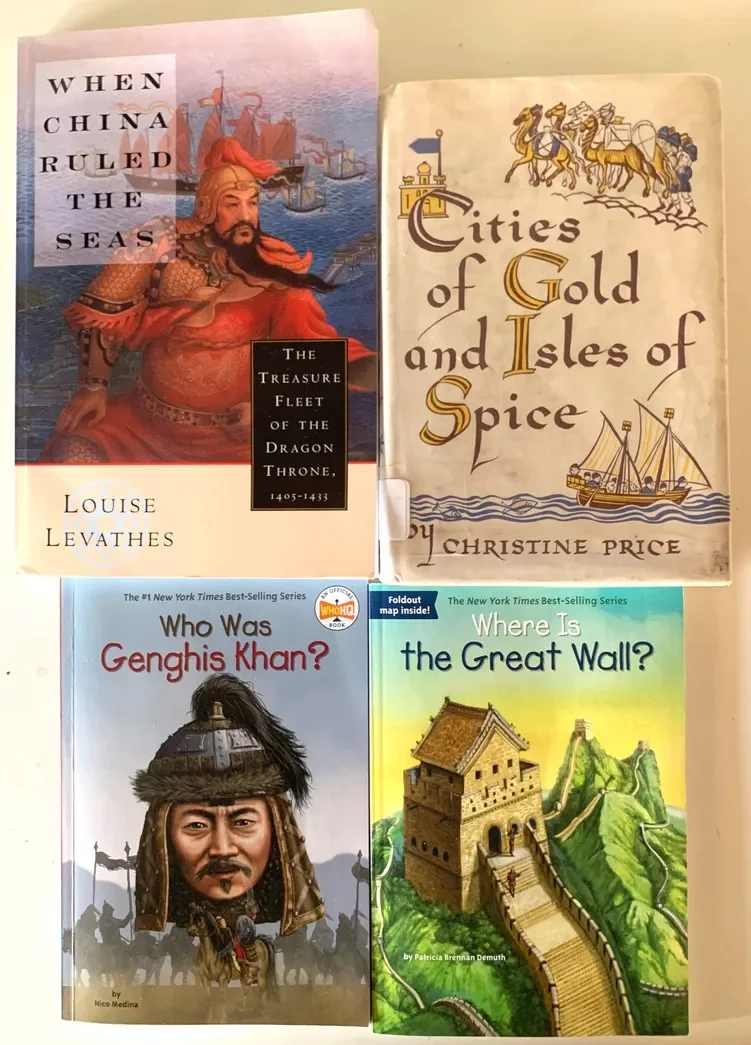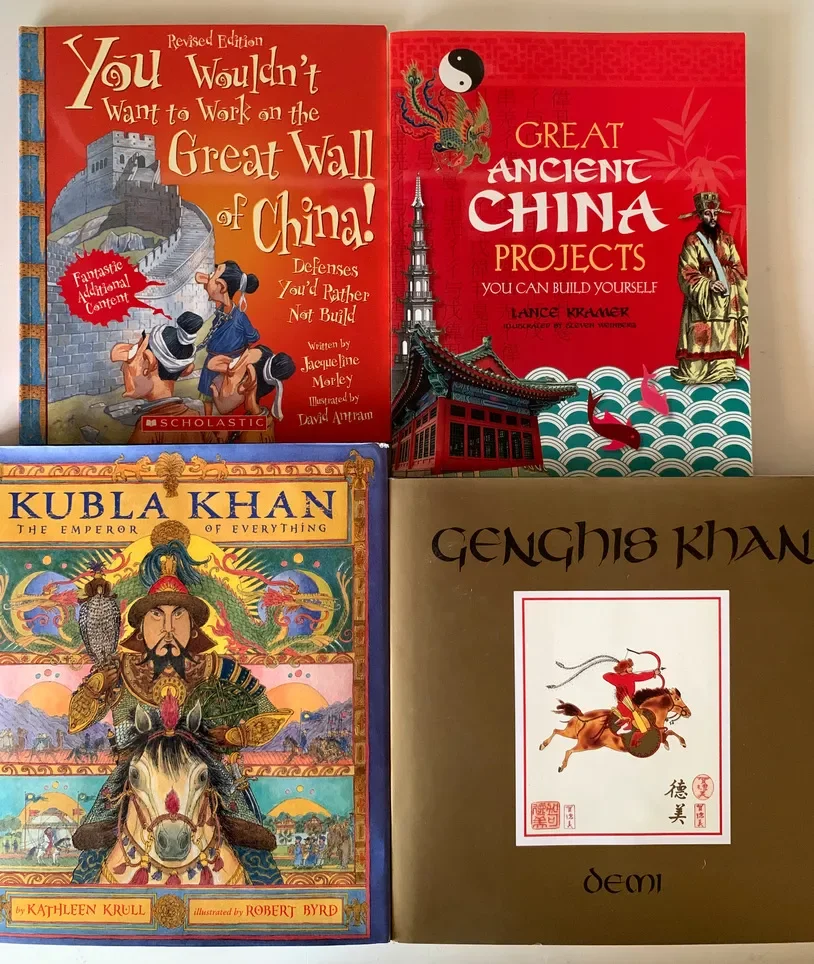History | Curriculum
Our History units were primarily made up of Charlotte Mason style Living Books. On some occasion we used a classical approach to history with the four year cycles, but quickly moved into the Waldorf approach and finally settling on a hybrid of living books and the Waldorf curriculum.
History Curriculum
-
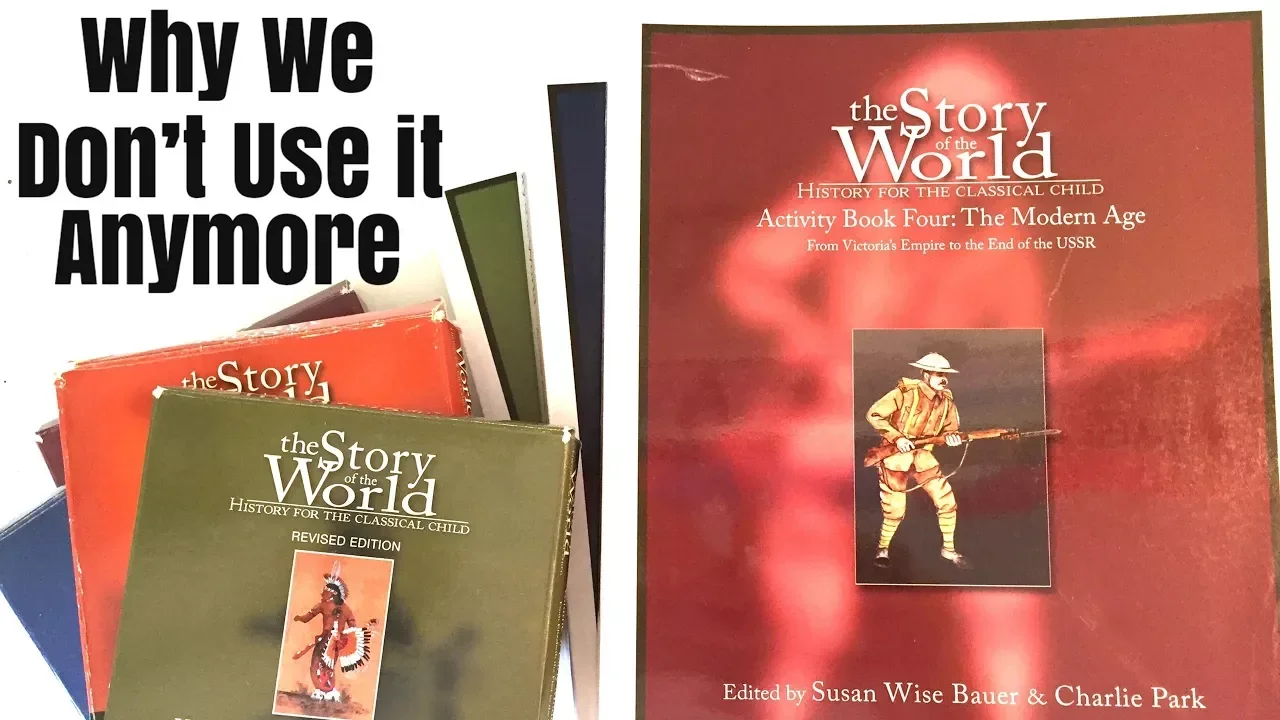
Story of the World | Homeschool Curriculum Review
Story of the World was the first history curriculum we purchased years ago when our homeschool journey was just starting out. While we enjoyed it for a couple years, we quickly realized that it wasn't going to be the direction we wished to go in. Since then, I've given away all of our STOW curriculum except the audio CDs. And while we haven't listened to the CDs in years, we still would like to keep them and refer to them during our unit studies.
-
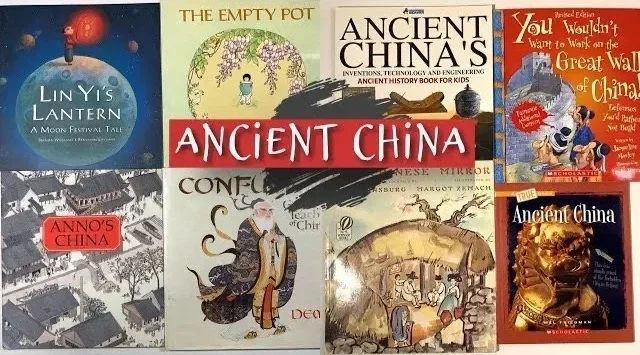
Ancient China Unit Study
How I put together a history unit study has been a process I have honed over the years. I like an enriching unit filled with books, projects and hands-on activities. I look for varied material so it will appeal to multiple ages, grades, abilities and skill sets. I love picture books. I feel they are an undervalued and overlooked resource in education beyond very young elementary, but I will incorporate picture books well into upper elementary and middle school. I include some non-fiction books as well.
-
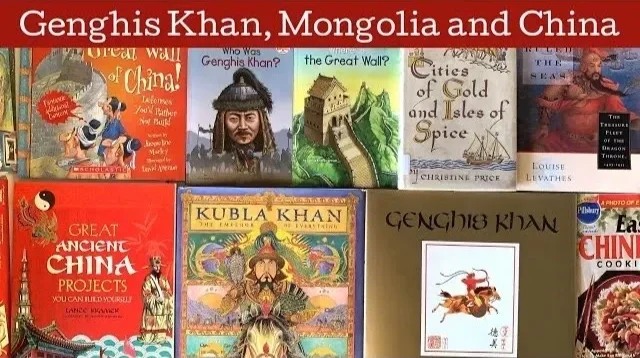
The Great Khans of Mongolia | Kubla Khan, Genghis Khan, The Great Wall of China
It's not a history unit if you don't talk about the people. After all history is His Story right? Her story is mixed in there, but is rarely the focus. While I have not made an effort to explore female historical figures, I think we do ourselves, our education and our children a disservice when we don't include their stories.
-

Marco Polo Unit Study
When we first embarked on our Silk Road main lesson block, we thought we would simply add a few resources to complement our Middle Ages unit. Three years later and this little unit has grown into several deeply engaging main lesson blocks that span over 1000 years of history and half the world from North Africa to China.
-
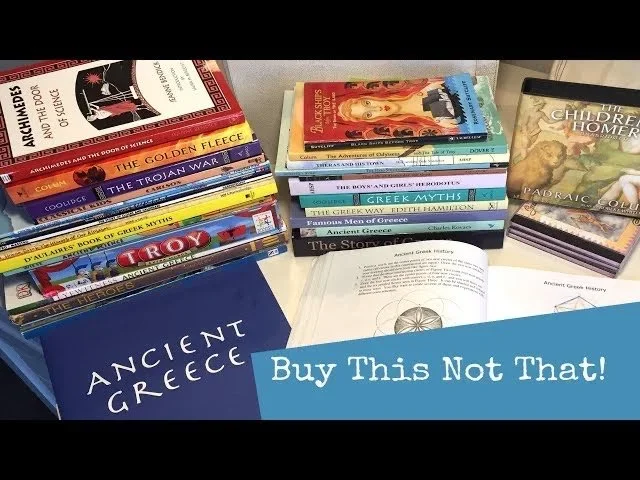
Ancient Greece Review
Unit studies can be so much fun to put together, but I face one problem every. single. time. I plan too much. I get overly excited. I get too many resources. While I struggle to learn how much is just right, come along and I'll show you what works, what didn't work and what we'll save for later. Some resources are worth using again and others weren't worth buying to begin with.
-
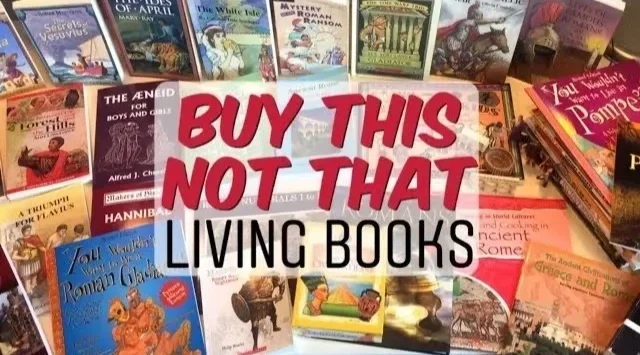
Ancient Rome Curriculum Review
Not only is this a review of the materials we used for our Ancient Roman History main lesson block, but it's also an insight in how we do our main lessons or unit studies. I share clips of my children doing their work throughout this unit during the video as well as my son's main lesson book so you can see the work he completed during this unit.
-
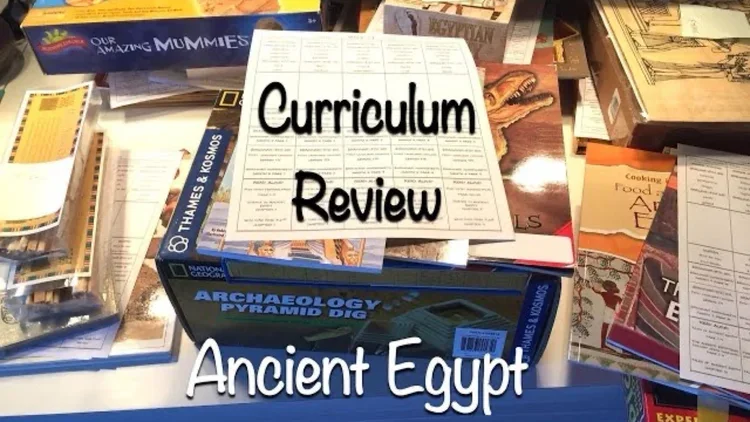
Curriculum Review | Ancient Egypt | Homeschool
At the close of a unit or main lesson block, I share the books we read and projects we did and let you know how everything went. Some books are worth buying and keeping, others are worth checking out at the library, and still others might be passed over in preference of games or kits.
-
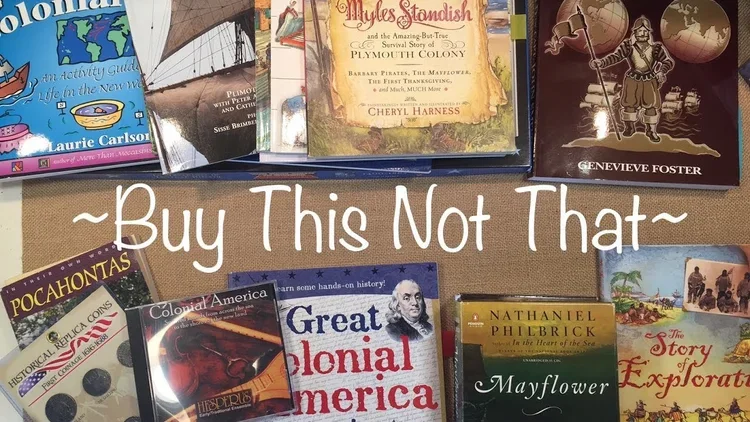
Curriculum Review | Colonial Times
We completed our Colonial Times unit study from our American History unit. Some books were fantastic! Others were okay, but not worth owning. We did a number of activities inspired by three activity books, but if you had to just pick one, which would you choose?
-
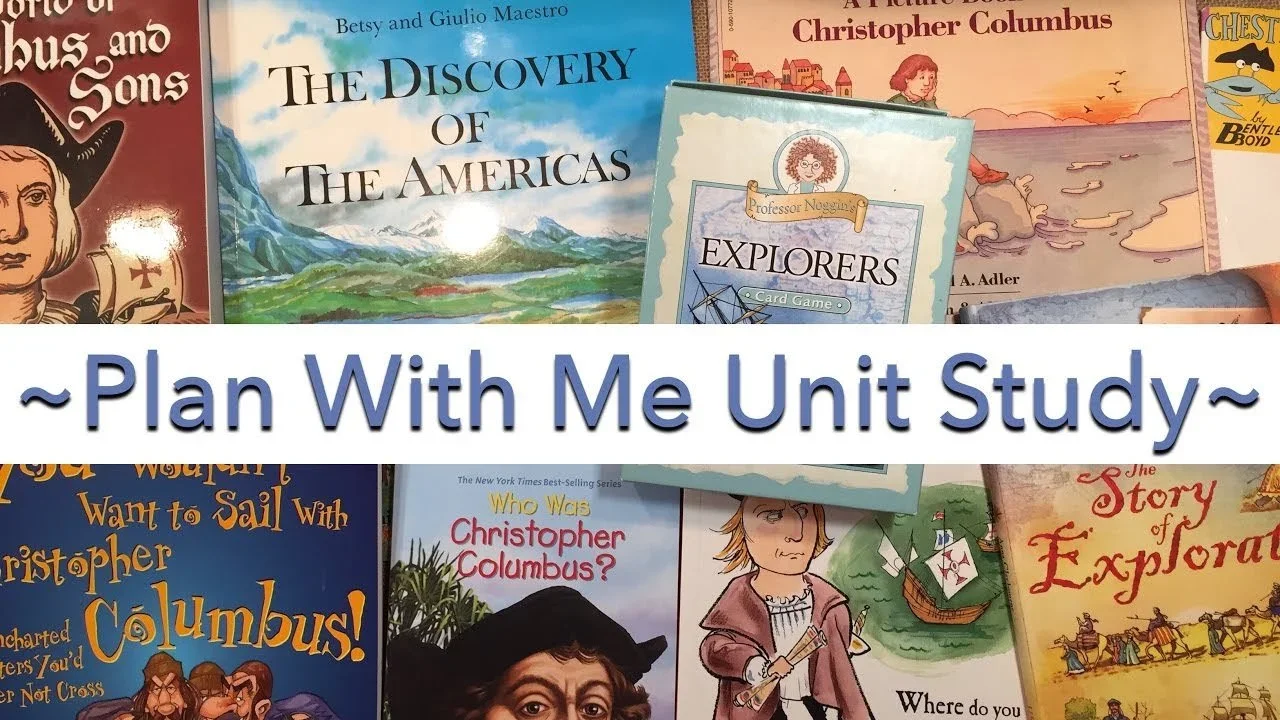
Lesson Planning | Discovering the Americas & Columbus
Join me as I share the resources we are using for our Discovering the Americas unit study. I share how I chose books, decide which books to read aloud versus which books I'll assign to my child, and lesson plan this unit study.
-

Ancient Egypt
Curious about how to put together a unit study? Join me as I take you through my process for putting together a unit study for Ancient Egypt. Much of the process is the same for all my history units, and only varies slightly for other units. I use a Waldorf curriculum as a default curriculum but often stray from the curriculum and come up with my own lesson plans
-

Ancient India Main Lesson Block
The Ancient Civilizations are taught in Waldorf schools in grade 5 when children are 10-12 years old. The ancient cultures are taught uniquely in a Waldorf setting as the main aspects of the lessons are concentrated on the beliefs of the people, their spiritual beliefs, their creation stories, and their divinely guides teachers on the earth plane.
-

How to do a Unit Study | Ancient Greece
It's time to put together another unit and this time it's Ancient Greece. We already started out with materials for this unit, but over the last few years, we added more resources. It's quite a full unit now, and it doesn't look like we'll be able to cover everything we want in four short weeks.
-
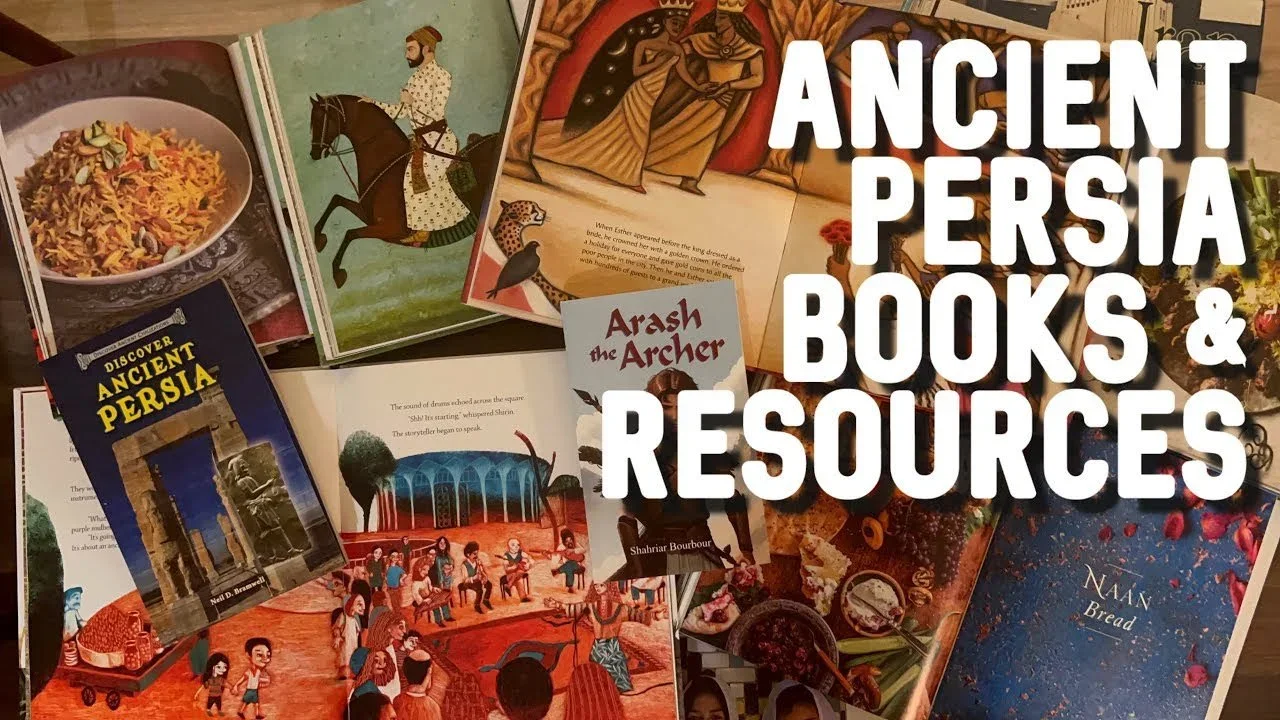
Ancient Persia | Waldorf Main Lesson Block | Unit Study
I start my lessons on Ancient Persia in the kitchen years before we read a single book. In part because we love Persian (Iranian) food deeply and have learned several recipes from my friend Teyebeh who is a profoundly talented cook. Most of not all of the recipes featured for this unit are recipes I got from my friend. These have been family favorites for years and it has been our delicious introduction to this unit. year late.
-
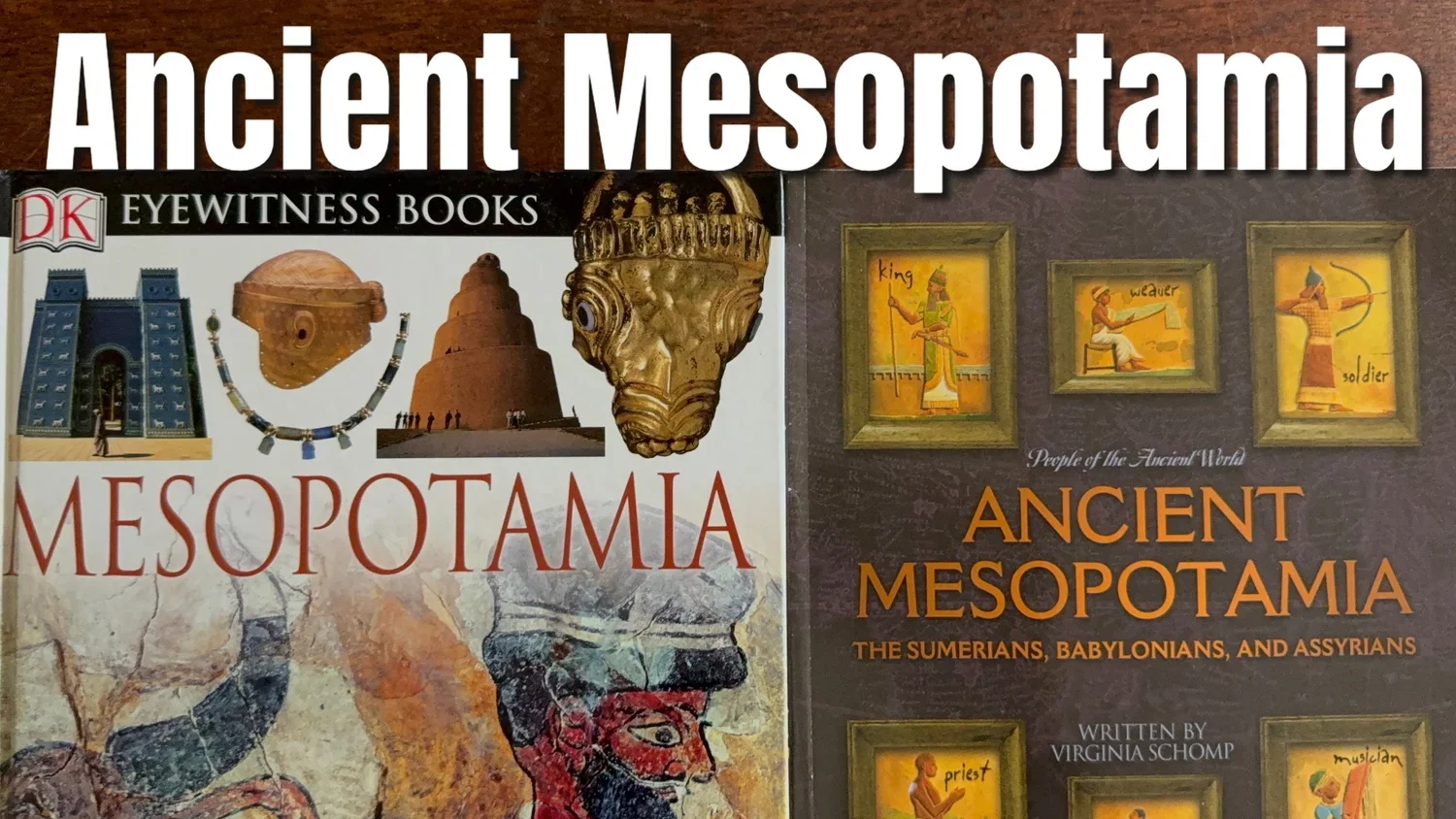
Ancient Mesopotamia
The ancient civilizations blocks for the Waldorf curriculum for year 5 is fairly extensive having continued from the previous year's exploration of Norse mythology, the civilizations of Akkad and Sumer and the study of the Buddha and the Jataka Tales. For year 5, the student will cover the ancient civilizations of India, Persia, Mesopotamia, Egypt and finally Greece. Greek history and ancient Roman history will also be covered in year 6.
-
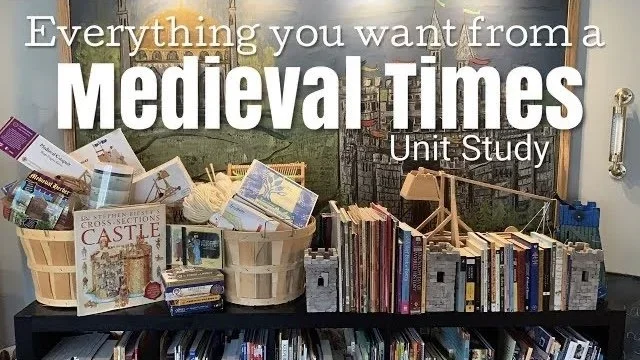
Medieval Europe | The Middle Ages
Here you'll find nearly every resource we've used or plan to use while covering our Middle Ages unit. You can find details of the books and other resources we've used as well as the vendors I purchase material from on my website on the blog post that accompanies this video.
-

Norse Mythology Main Lesson Block
When we did our Norse Myths, I collected various books and put together my own block without the main lesson book. I sourced various books, but many ended up being similar and redundant. Only one book on Norse Myths is needed, while I ended up with four. One illustrated, one for upper elementary, one vintage and one curriculum based.
-
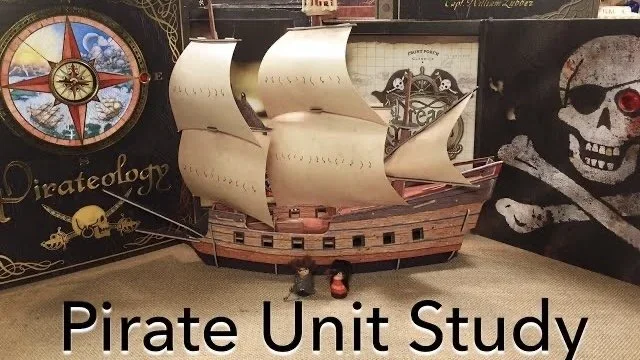
Pirate Unit Study
This is a different unit study for us because we don't typically do one that's this small and so specific, but years ago I bought a pirate book that came with pieces to assemble a pirate ship and recently my 10 year old assembled it and that was the spark that ignited this unit study.
-

Alaska Unit Study
Our exploration of Alaska came about because my sister, Samiah and her family, moved up to Alaska in the fall of 2020. Once there, she was diagnosed with a brain tumor and after surgery, it was discovered that it was an aggressive and fast growing brain cancer.
Story of the World | Homeschool Curriculum Review
Story of the World was the first history curriculum we purchased years ago when our homeschool journey was just starting out. While we enjoyed it for a couple years, we quickly realized that it wasn't going to be the direction we wished to go in. Since then, I've given away all of our STOW curriculum except the audio CDs. And while we haven't listened to the CDs in years, we still would like to keep them and refer to them during our unit studies.
This history curriculum has its merits. It's easy to read, complete and perfect for elementary school. There are four volumes in this series that cover from Ancient Times to Modern History. The curriculum comes with four books, CDs, Student Pages, Activity Book and Test manual with answer keys. And while they are a quick informative read, there is a lot of information that isn't covered in detail making it a good foundation to build on but not complete. Since we wanted to approach history in a slower deeper manner rather than the four year cycles of that typify the Classical Education model, we stopped using this curriculum and went headlong into our Waldorf curriculum.
Ancient China Unit Study
How I put together a history unit study has been a process I have honed over the years. I like an enriching unit filled with books, projects and hands-on activities. I look for varied material so it will appeal to multiple ages, grades, abilities and skill sets. I love picture books. I feel they are an undervalued and overlooked resource in education beyond very young elementary, but I will incorporate picture books well into upper elementary and middle school. I include some non-fiction books as well. These are the kind of books that tend to be a bit drier, somewhat textbookish and readily available at your local library. I used to check them out from the library, but now I use our educational funding to buy these books.
Have you been to the kitchen for your units? It’s a great way to engage the children and cultivate a love for the lessons in a meaningful and lasting way. Plus food tastes good! And we all have to eat, so why not include it in your studies for a memorable lesson.
Hands-on activities is a must for me. But sometimes there aren’t pre-made kits (which I love and utilize as often as possible), so I often look for a craft or activity book to add to our units. That way, I can source the materials to make our own projects and crafts. Often I upgrade the materials and project so it becomes a lasting project as I really dislike disposable crafts. And when that’s not possible, I try to make things we can easily recycle. With this particular unit, I found some amazing Great Wall of China construction kits as well as some clay warrior projects. Those kits are well worth it because they contain materials and projects I can’t easily recreate. Historical fiction is also a must in a history unit.
I find historical fiction to be a great gateway resource into the subject matter. Often historical fiction bring to life a historical period with engaging characters and storylines. You can get a feel for the history in a thrilling novel and often you learn more deeply about a historical event through the medium of storytelling. If historical fiction are available for your unit, I highly recommend you substitute with biographies. Or do both! Biographies are connection makers. When you learn about a historical figure, you become connected to that person. You either start to admire or despise the person and that creates conversation.
When possible, I like to include an outing to a museum or exhibition that complements our unit. Sometimes this is a way to inspire and start the unit, to celebrate and culminate the ending or happens outside the unit entirely because it didn’t coordinate ‘perfectly’. However you do, museums, plays, exhibitions and road trips are going to be some of the most profound and memorable educational experiences.
The Great Khans of Mongolia | Kubla Khan, Genghis Khan, The Great Wall of China
It’s not a history unit if you don’t talk about the people. After all history is His Story right? Her story is mixed in there, but is rarely the focus. While I have not made an effort to explore female historical figures, I think we do ourselves, our education and our children a disservice when we don’t include their stories. One book series I recently found that does a fair job exposing what it’s like to be a girl and a boy in history is the “If You Were Me and Lived in…Ancient China” by Carole P. Roman. There are several in this series and what I like is seeing the difference in what kind of life you would have depending on whether you were a girl or a boy, or woman or man, or rich or poor. For our Ancient China and Silk Road unit, we did a mini explorative unit on Genghis Khan, Kublai Khan and Marco Polo. Other notable biographies specifically on Chinese figures would be ZhengHe, Xuanzang, and Confucius as well as emperors from the different dynasties.
It’s not a history unit if you don’t talk about the people. After all history is His Story right? Her story is mixed in there, but is rarely the focus. While I have not made an effort to explore female historical figures, I think we do ourselves, our education and our children a disservice when we don’t include their stories. One book series I recently found that does a fair job exposing what it’s like to be a girl and a boy in history is the “If You Were Me and Lived in…Ancient China” by Carole P. Roman. There are several in this series and what I like is seeing the difference in what kind of life you would have depending on whether you were a girl or a boy, or woman or man, or rich or poor. For our Ancient China and Silk Road unit, we did a mini explorative unit on Genghis Khan, Kublai Khan and Marco Polo. Other notable biographies specifically on Chinese figures would be ZhengHe, Xuanzang, and Confucius as well as emperors from the different dynasties.
Marco Polo Unit Study
When we first embarked on our Silk Road main lesson block, we thought we would simply add a few resources to complement our Middle Ages unit. Three years later and this little unit has grown into several deeply engaging main lesson blocks that span over 1000 years of history and half the world from North Africa to China. As we explored historical events and notable figures, we were whisked away into histories that deserved their own units rather than afterthoughts to a larger Middle Ages unit. As a result, we now have an African main lesson block which focuses on the empires of Mali, Ghana and Songhai, the king Mansa Musa and the time period of about the 900s to the 1400s.
We also did a unit on Ibn Battuta, Marco Polo and the Great Khans of Mongolia. That led us to China, so a unit on Ancient China naturally emerged, which led us full circle to the Silk Road and the expansion and diversifying of ideas, culture and religion, which naturally brought us back to a unit on Islam and the Islamic Golden Age which ended up being an extensive unit in and of itself. So when looking into the Silk Road, what originally was going to be books that complement the Golden Age of Islam or Ancient China, became its own independent and focused unit. In this unit we explore what it was like for merchants and caravans on the silk road. We discover the historical figures who traversed the silk road for the sake of religion, trade and conquering. We learn how this highway changed the course of history in profound ways and how through trade, more than just products were exchanged.
Ancient Greece Review
Unit studies can be so much fun to put together, but I face one problem every. single. time. I plan too much. I get overly excited. I get too many resources. While I struggle to learn how much is just right, come along and I’ll show you what works, what didn’t work and what we’ll save for later. Some resources are worth using again and others weren’t worth buying to begin with. We did a few projects with this unit, but not as many as other units. All the lessons and hands-on projects are in the Ancient Greece Playlist.
Check out the lessons plans for this unit:
Week 1 Ancient Greece Lesson Plans
Week 2 Ancient Greece Lesson Plans
Ancient Rome Curriculum Review
Not only is this a review of the materials we used for our Ancient Roman History main lesson block, but it's also an insight in how we do our main lessons or unit studies. I share clips of my children doing their work throughout this unit during the video as well as my son's main lesson book so you can see the work he completed during this unit.
You can see how we put this unit together by checking this video.
This is our third time doing this unit and over the years, I've collected an number of resources to add to our main lesson book or to depart completely and create our own unit studies. Some were enjoyed by my children and others were not. I'll share my experiences with these books, activities and projects. Also, I've used far more materials than what is necessary to do a successful unit study. I share my top picks and must haves. When it comes down to the main book or spine for your unit study, it's a toss up between The Story of the Romans by H. A. Guerber and Ancient Rome by Charles Kovacs.
Ancient Rome by Charles Kovacs.
Take your guess as to which of those two resources I recommend. You can leave your guess in the comment section below.
Here's the complete Ancient Roman Playlist with all the videos that accompany this unit.
When putting together a history unit, I look for books/resources in the following topic areas:
History (famous people, timeline history, historical events)
Biographies (picture books work great for biographies)
Geography (a single atlas book does fine)
Historical fiction (a great way to get your history/culture in a fun book)
Culture/food/clothing (cook up a dish from the time period)
Audio books/songs (music from the time period is fun to listen to)
Projects/Activities (pre-made kits are a go-to staple around here)
Games (Professor Noggins are our favorite)
Workbooks (use sparingly or skip and do narrations)
Picture books (surprisingly informative & fun)
Activity and project books (Lauri Carlson has several)
Science/math (adding other subjects rounds out your unit)
Two more things I use for lesson planning are full back Post-its sticky pads and a pencil. I write notes about each book/resource on the sticky pad and stick it on the front cover of the book for easy lesson planning.
Lesson planning has been in flux for about a year or two. Currently you can find lesson plans for this unit graciously assembled by Sayeda at Precious Years exclusively for Homeschool Panda. Follow link below to access.
Ancient Roman History Lesson Plan
Steps to import lesson plan: Homeschool Panda
Step 1: Log into Homeschool Panda
Step 2: Click on "Lesson Planner” from left hand pane
Step 3: Click on “Import Lesson Plan” located on the top right
Step 4: Paste this link:
https://app.homeschoolpanda.com/lessons/export/a2e33ed4afaaf02e3366
Once Lesson Imported, you can assign to a student.
You can also find the lesson plans on my website. I created my plans using Mac Numbers sheets. I like to get a full week of lesson plans on a single sheet of paper.
Check out our last Ancient Roman History unit.
Minute Markers:
2:13 History Spines for Unit Study
14:20 Historical Fiction
22:50 Picture Books and more
25:50 Mythology
26:37 Math + History
27:37 Hands on projects. toys and audio
34:15 Activity Books
38:02 Gladiators and the Army
40:47 City & architecture
42:24 Pompeii
48:10 Main lesson book
53:44 Reveal which book I prefer
Curriculum Review | Ancient Egypt
At the close of a unit or main lesson block, I share the books we read and projects we did and let you know how everything went. Some books are worth buying and keeping, others are worth checking out at the library, and still others might be passed over in preference of games or kits.
We made it to the end of our Ancient Egypt unit study! Woohoo! I’ll review all the books we read and projects we did in this video. I’ve included a downloadable list of all the books and kits we used and whether I found them valuable for our unit. Is there a book or project you’ve done that I didn’t mention? Please leave me a comment!
Now that we are finished with our Ancient Egypt unit study, I can review the material we used. Hopefully you find it helpful in your search for material to add to your unit. Please not that my kids are pre-K, 4th grade and 8th grade. This unit is for my 4th and 8th graders, but my pre-Ker joined us and especially liked all the hands-on projects.
I have not written the reviews with grammar in mind! Grammarians beware 😉
Want a complete list (sans pictures) you can download and print out? Click here.
Do you have a book or project you added to your Ancient Egyptian unit study you want to share? Please leave it in the comment section. I would love to hear what things you did for your unit 🙂
Curriculum Review | Colonial Times
We completed our Colonial Times unit study from our American History unit. Some books were fantastic! Others were okay, but not worth owning. We did a number of activities inspired by three activity books, but if you had to just pick one, which would you choose?
I’ll share my pick and thoughts on why I chose it. We included some games in our unit as well as an audio CD. The instrumental music of the colonial times was the best!! I loved it as did the children. We played it every morning and often listened to the whole CD 2-3 times throughout the day.
We started these cooler often cloudy or misty mornings with a candle and the soft colonial times music playing in the background. Often we kept the blinds in the school room only angled open but not raised so the room was darker than usual (more than adequate for doing school work), and turned on our accent lighting but kept the harsh bright overhead track lighting off.
We kept other superfluous busy work to a minimum. I only assigned a one worksheet each in math and grammar (review work) and one worksheet daily in fractions for my 5th grader. We held off on spelling practice, mental math, poetry and the seerah (religious studies. My 5th grader often started the day with his worksheets and playtime with his sister who is five years old. later in the morning we would begin reading, but often we wouldn’t start reading until afternoon or evening. We would either sit around the fireplace and read or sit on the couches with hot chocolate and read. For this unit I did three big chalk drawings and my son copied them into his main lesson book.
I also did two smaller chalk drawings of which I don’t have videos for. Two entries in his main lesson books were copied from books we read. I penciled an outline and he drew it in and colored it. We alternated between oral and written narrations. Actually we did more oral narrations. My 5th grader read a number of historical fiction on his own. I had intended to turn at least one of those reading assignments into a book report but didn’t. Maybe I still will or maybe I’ll save it for the next unit. Having disliked book reports in school, I have an aversion to assigning them. I think a far better method is simply asking the student about the book and asking who the author is in an organic natural manner. I don’t want to kill the spirit of reading by assigning reports. He’ll likely quit reading so many books for school or cut down on the number. Right now he reads them like they’re for pleasure, and he’s learning so much. For this unit, we did a number of hands-on projects and activities.
Since this unit overlapped with fall and Thanksgiving, it was seasonally appropriate to be making pumpkin pie, apple desserts, and spiced apple cider. We churned our own butter using an antique butter churn as well as made it in a jar we shook vigorously. We also made popcorn, vegetable soup in a pumpkin and candied orange peels. We also made a child-sized broom and mop. We marbled paper, made a quill and spun yarn. I loved it all and my children were equally amused and educated in the process.
You can see the complete playlist for our Colonial Times unit study, and see all the materials we used the chalk drawings we made and projects we did.
See the complete list of materials we used for our history units by checking out my free download at Teachers Pay Teachers.
